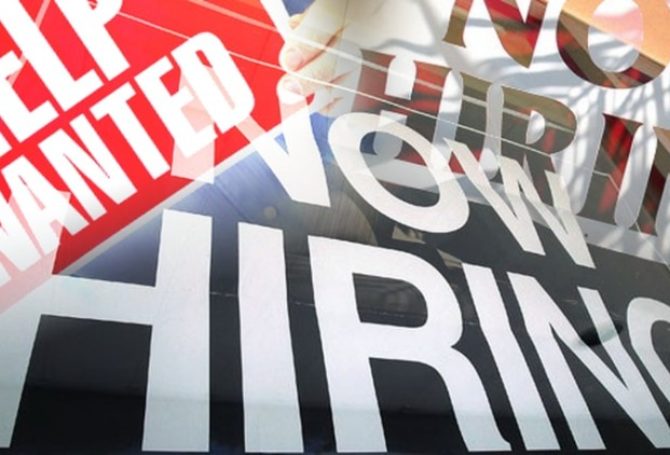
America suffers from a worker shortage, but not a shortage of explanations – the Great Resignation, lingering COVID fears, the Great Promotion and overwhelming exhaustion. All of them may be valid, representing layers of trends with a cumulative impact.
First, some current numbers from the Bureau of Labor Statistics: Nonfarm payroll employment increased by 18.5 million since April 2020, when pandemic-induced lockdowns peaked. The unemployment rate fell last month to 4.2 percent, just slightly higher than the jobless rate before the pandemic. Whites experienced a 3.7 percent unemployment rate compared to 6.7 percent for Blacks, 5.2 percent for Hispanics and 3.8 percent for Asians.
However, the most startling work-related statistic is the large number of people quitting their jobs to pursue new ones. In April 2021, 3.8 million workers quit their jobs, which was then a single-month US employment record. In August, another 4.2 million workers quit. In September, 4.4 million quit, setting yet another record. In October, 4.2 million quit. Today, BLS released statistics for November, when 4.5 million workers, or roughly 3 percent of the US workforce, quit – posting yet another record. All this turnover helps to explain why nearly 11 million jobs in America remain unfilled.
Even though the rate of hiring remains strong (6.5 million jobs were filled in October) to meet rising market demand, employers are struggling to fill a record number of job openings. There were 67 unemployed workers per 100 job openings in October. In February 2020, there were on average 82 unemployed workers per 100 job openings.
Those touting the Great Resignation point to the large numbers of workers who exerted their marketplace leverage to jump to a new job with better pay, more benefits and flexible work conditions. They may have switched because their former employers were inflexible on work arrangements or refused pay increases and more time off. Maybe workers just wanted a change of scenery, as many departed larger cities to seek larger, cheaper living space in smaller cities such as Boise, Idaho with excellent internet services that enabled remote work.
Great Promotion advocates agree workers switched jobs because of compensation and working conditions, but they say the reasons run deeper. Many workers are fed up or bored with their old jobs. They feel stuck in a rut and see the worker shortage as an escape route to something new and more challenging. Working remotely, these advocates say, opened worker eyes to new possibilities – employers in different cities or countries and the opportunity to launch their own online businesses. There also may be a Great Reassessment whereby people question the demands of work life and seek a different work/life balance or a more relaxing community environment.
It would be strange if these overlapping trends didn’t motivate people to look around, re-assess and make changes in their life that will alter the US workplace, perhaps permanently.
Missing women from the workplace may relate to reticence because of the stubbornly resurgent coronavirus. They worry about their children safely returning to school. Others may be caregivers for elderly parents or people with compromised immune systems. Women may have found ways to stay at home and subsist with gig economy jobs or freelance remote work.
News reports are full of stories about exhausted healthcare workers and frustrated educators who have quit. Employment in health care has dropped by 450,000 jobs since February 2020. The hospitality industry and airlines have lost workers because of schedule demands, unruly patrons and exposure to unvaccinated people. Workers in all sectors have undergone stress stemming from the pandemic and its effects on everyday life from shopping at stores to vacations to interacting with family and friends.
The pandemic, perhaps unintentionally, elevated the role of essential workers, the invisible men and women on the frontlines of work who weren’t able to shelter and work at home. Essential workers have been praised for their diligence and sacrifice, though it’s not clear they have been uniformly rewarded for their efforts.
Increased marketplace leverage for workers has been manifested by several strikes at major employers and unionization efforts at Amazon, Starbucks and, locally, Burgerville. Starbucks employees aligned with the Service Employees International Union. Some 19,000 graduate assistants in the University of California system joined the United Auto Workers. Burgerville employees at five Portland locations voted to form their own Burgerville Workers Union. Union contracts variously provided for pay hikes, cost-of-living adjustments, more benefits, improved training and more dependable scheduling.
Economists believe the pandemic has sparked profound and possibly permanent workplace disruption, tearing down previous boundaries, even while prompting different types of stress. Job-flipping, reassessing work life and pursuing new opportunity didn’t start with the pandemic, but they have been accelerated and magnified by the pandemic. What makes the picture blurry is more than one trend occurring simultaneously.
A reasonable summary: Baby Boomers have the money to quit and go on cruises. Millennials remain plagued by college debt and aren’t starting families. Technology is changing the nature of work and the skills required. We have made it more difficult for immigrants to fill gaps in our job market. Nurses, doctors and educators have felt the brunt of coping for two years with the impact of the pandemic. The rate of fatigue and depression is soaring. The Omicron variant adds a new level of uncertainty and anxiety for employers and employees. Workplace disruption has given workers more leverage and left employers with 11 million jobs to fill.
It would be strange if these overlapping trends didn’t motivate people to look around, re-assess and make changes in their life that will alter the US workplace, perhaps permanently.
Employment Statistics Suggest US Economy Nears Full Recovery
Datapoints tend to paint fuzzy pictures, but BLS statistics issued in November suggest the US economy has nearly recovered from its sudden drop-off in April 2020.

- Permanent job “losers” total 1.9 million, which is 623,000 more than in February 2020.
- Long-term unemployment (jobless for 27 or more weeks) totals 2.2 million, 1.1 million more than in February 2020.
- Labor force participation has risen to 61.8 percent, just 1.5 percent lower than February 2020.
- Employees preferring full-time work, but forced to work part-time total 4.4 million, about the same number as February 2020.
- The number of people who are out of the workforce, but want a job totals 5.9 million, which is almost 850,000 more than in February 2020.
- The number of ‘discouraged workers’ not looking for work totals 450,000.
- In November, 3.6 million people reported they were unable to work because their employers closed or lost business because of the pandemic.




